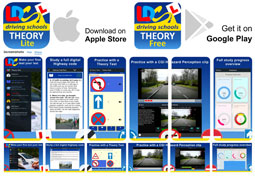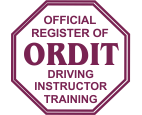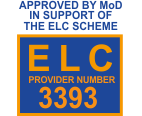Developing a safe driving policy and system
Follow these four steps to develop your policy and system.
1. Gain management commitment
In order to begin the process senior management needs to accept the important role that driving and vehicles play in your organisation. It may help to have a general statement from the head of the company sent out to all employees expressing his or her desire to create a safe driving culture within the business and the need for everyone within the organisation to fully support the endeavour.
2. Identify key people
Decide who is going to be involved in the development of your policy. People such as fleet managers, human resource managers, H&S managers and industrial relations managers may be suitable. Others to include could be employees with a particular interest in road safety issues. Involving employees in the policy development stage will ensure their ideas and input are considered. A consultative and collaborative approach will lead to greater acceptance of the policy at the implementation stage. Ideally, appoint a manager to co-ordinate the development of the safer driving policy and control system.
3. Develop a policy and a control system suited to your organisation, targeting key road safety issues
Since no two organisations are exactly alike, you will need to devise a Safe Driving Policy and System that suits your particular needs and meets your organisation's specific activities and priorities. However, since most risks associated with driving at work and indeed in general are well known within the driver training profession it makes sense to use any existing information in this regards (with or without modification) and combine this with any specific to you.
Identifying specific driving activities/risks: Your fleet accident/insurance claims and repair claims can guide the development of your policy in respect to identifying specific risks related to your business. Assess the typical types and length of vehicle journey undertaken, what types of vehicles are used and are any particular manoeuvres or other vehicle related activities involved. Discover if any members of your staff have concerns about driving at work or indeed any ideas of what might be done to improve road safety at work. From this you can identify any specific risks related to driving in your business.
Identifying general driving activities/risks: A lot of research and statistical information exists to guide the development of policy, procedures and reporting to minimise some well know driving risk areas. To help you we have listed below the more common areas were policy, procedures and guidance may need to be established:
Managing driver risk:
Safe driving a condition of employment
Ensuring new recruits are competent and legal
Continual road safety education programme
Periodic eyesight, health and fitness to drive checks
Periodic driver assessment and/or training
Periodic license checking for traffic violations
Better driving incentive scheme
Traffic violation reporting
Incident near-miss reporting
Accident and bump reporting
Fatigue reporting
Unsafe to drive reporting
Complaints of poor driving reporting
Distractions and inattention
Fatigue and tiredness
Impairment
Road rage, stress and frustration
Hazard perception and awareness
Vulnerable road users
Defensive/advanced/eco driving
Driver and passenger ergonomics and safety
Maintaining a safe distance
Speed awareness and control
Skid avoidance and control
Bends
Overtaking
Priorities
Crossing traffic and emerging
Positioning, merging and lane changes
Parking
Reversing
Blind spots
Breakdowns
Traffic signs
Managing vehicle risk:
Procurement of safer and/or more eco-friendly vehicles
Regular vehicle safety checks
Tyre replacement strategy
Vehicle servicing and maintenance
Vehicle sympathy and smoking
Vehicle and personal safety/security
Vehicle familiarity and driver experience
Vehicle insurance coverage and none work usage
Vehicle maintenance defect/abuse reporting
Vehicle loading/unloading and securing loads
Vehicle towing
Passengers, hitchhikers and other drivers
Carrying safety equipment
Carrying vehicle spares
Car hire requirements
Use of employee vehicles for work and insurance
Managing journey risk:
Journey avoidance
Safer alternative travel
Journey preparation and planning
Journey familiarity and driver experience
Journey time and distance limits
Journey breaks
Adverse weather and traffic conditions
Hazardous journey reporting
Driving abroad
Managing journey risk:
Establish site traffic procedures
Site layouts and signs
Responsibilities:
The policy should clearly outline the responsibilities of employees and management. The policy should have a general statement clearly committing the organisation to a safer driving culture and outline both management and driver responsibilities. In particular management should lead by example and ensure a system is in place to ensure all vehicles used for work are fit for purpose, all journey routes are safe, and all drivers are competent, legal and aware of their responsibilities. Drivers are responsible for following the organisations policies, procedures and guidance. It is also management's responsibility to ensure as much as it is reasonably practical that such policies, procedures and guidance are followed and if not to show appropriate action has been taken to rectify the situation. This often forms part of the organisations disciplinary procedures. Many organisations produce an employees driving at work handbook that encompasses much of the above information.
4. Gather support and implement
Consultation is the key to a successful Safe Driving Policy and System. Once the draft has been developed, consider making it available to staff for comment. This will ensure their future support. Also identify which key decision makers will need to support the new approach and its implementation throughout your organisation.
Recognition of individual or group involvement will help promote employee support and ownership of the Safe Driving Policy and System. Consider linking the employee performance appraisal process i.e. rewards or incentives for accident-free drivers or conversely disciplinary procedures for driving or policy violations etc.











